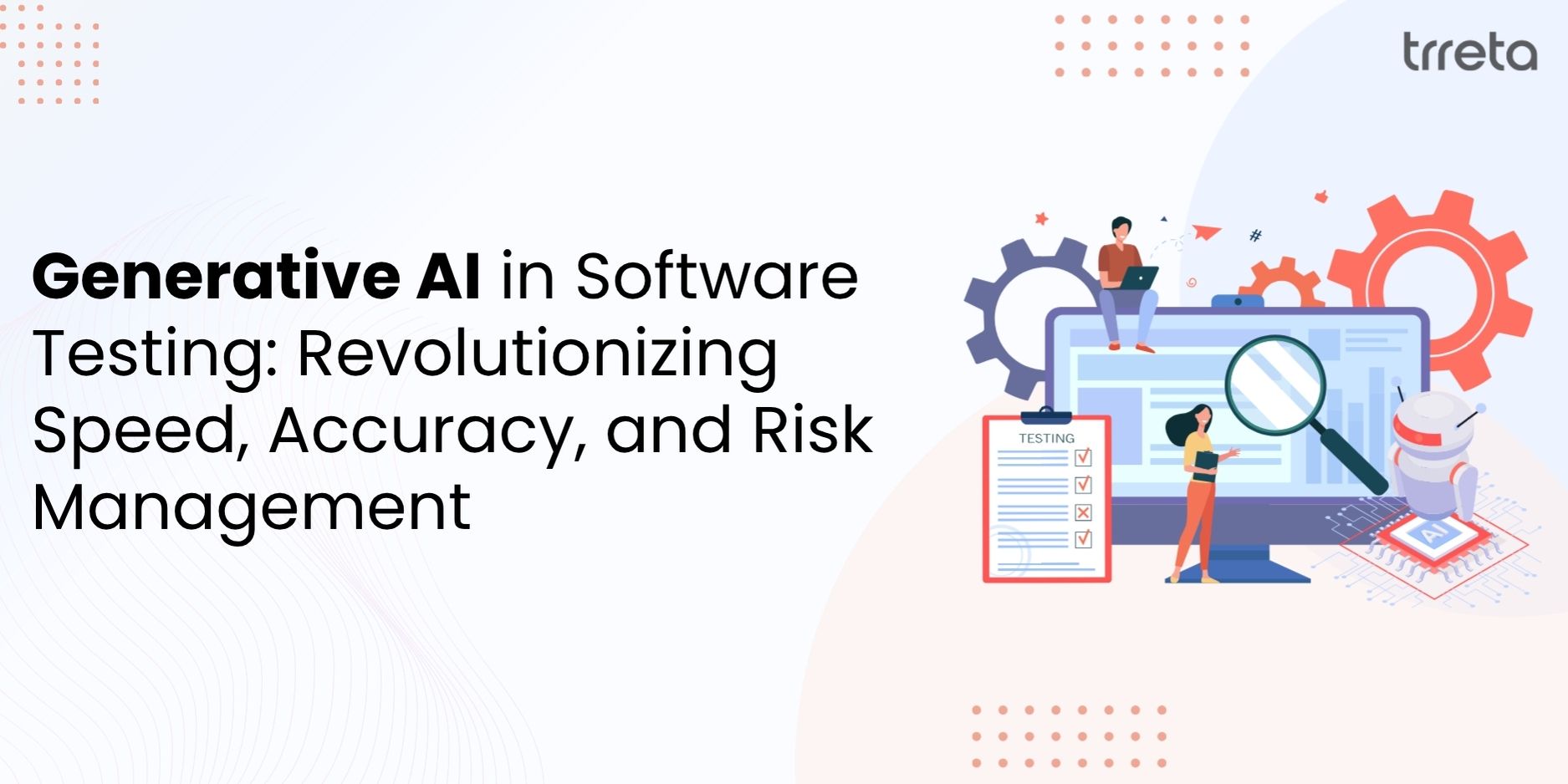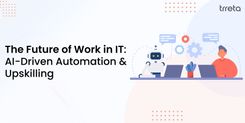Software testing has always been a cornerstone of reliable application development. Yet, as software systems grow more complex and release cycles become increasingly rapid, traditional testing methods are struggling to keep up. Manual test case creation, repetitive regression testing, and delayed bug detection often slow down development pipelines and introduce risks.
This is where Generative AI is making a transformative impact. By leveraging advanced machine learning models, AI can automatically generate test cases, detect defects, simulate user behaviors, and even predict potential failures. But while generative AI offers incredible speed and accuracy, it also comes with a unique set of challenges that organizations must address.
This blog delves deep into how generative AI is reshaping software testing, its benefits, practical applications, and strategies to mitigate associated risks.
Understanding Generative AI in the Context of Testing
Generative AI refers to algorithms capable of producing new content, insights, or outputs based on patterns learned from existing data. In software testing, this can translate to:
Automated Test Case Creation: AI reads functional specifications, code, or user stories and generates test cases automatically.
Simulated User Behavior: AI can mimic complex user interactions, including unusual edge cases, which traditional manual testing might miss.
Bug Prediction: By analyzing historical defect data, AI predicts where new bugs are likely to appear.
Test Data Generation: Generative AI can produce realistic, synthetic data that closely mirrors production environments, allowing for thorough testing without compromising privacy.
In essence, generative AI shifts testing from a purely reactive process to a proactive, predictive, and intelligent one.
Speed: Redefining the Testing Lifecycle
One of the most immediate benefits of generative AI in testing is speed. Traditional testing is time-intensive, often delaying releases. With AI:
Test Case Generation Becomes Instant: A task that could take weeks for manual testers can now be completed in hours. This includes regression suites, functional tests, and even integration tests.
Continuous Testing in CI/CD Pipelines: AI can run thousands of tests simultaneously during every build, ensuring that bugs are caught as early as possible.
Rapid Feedback for Developers: Instant results allow teams to fix issues immediately, reducing time-to-market and maintaining consistent quality across iterations.
For organizations embracing Agile or DevOps methodologies, this acceleration is transformative. Faster testing cycles directly correlate with quicker product releases and higher customer satisfaction.
Accuracy: Smarter Defect Detection
Speed is valuable, but accuracy is non-negotiable. AI enhances precision in several ways:
Detecting Subtle Defects: AI can spot anomalies in patterns that human testers may overlook. This includes unexpected behavior, UI inconsistencies, and backend performance issues.
Reducing Human Bias: Traditional testing often reflects the assumptions of testers. Generative AI systematically explores possibilities beyond human intuition, ensuring broader coverage.
Predictive Analysis: By analyzing historical defect data, AI predicts where defects are likely to occur, enabling teams to address potential issues proactively rather than reactively.
This accuracy is particularly critical in sectors like finance, healthcare, and e-commerce, where even minor software defects can have serious consequences.
Risks and Challenges
Despite its advantages, generative AI introduces several challenges that organizations must carefully manage:
Over-Reliance on AI: Teams may mistakenly treat AI outputs as fully accurate without human validation. While AI is powerful, it cannot fully replace human judgment.
Data Privacy Concerns: Training AI models often requires access to sensitive data. Organizations must ensure compliance with regulations such as GDPR, HIPAA, or CCPA.
False Positives and Negatives: AI may misinterpret patterns, flagging non-issues as bugs or missing critical defects. Regular evaluation and fine-tuning of AI models are necessary.
Skill Gaps: Testers and QA teams need new skills to work effectively with AI tools. Training and upskilling become essential to maximize AI’s benefits.
Tool Limitations: Not all testing tools support advanced generative AI integration yet. Organizations may need to invest in specialized solutions or customize their own AI pipelines.
Ignoring these risks can lead to misplaced trust in AI-generated results and unexpected failures in production environments.
Human + AI Collaboration: The Optimal Approach
The key to successful AI-driven testing lies in collaboration between humans and AI. Rather than replacing testers, AI should augment their capabilities:
AI Handles Repetitive Tasks: Automated test generation, regression testing, and performance simulations are best left to AI.
Humans Focus on Strategic Testing: Exploratory testing, UX assessment, risk evaluation, and complex scenario validation remain tasks where human insight is crucial.
Feedback Loops: Testers continuously provide feedback to AI models, improving their accuracy over time.
This collaborative approach ensures efficiency while maintaining the judgment, creativity, and context that only humans can provide.
Real-World Applications of Generative AI in Testing
Generative AI is already being applied across industries:
E-commerce Platforms: AI simulates diverse user journeys across devices to detect performance issues, checkout glitches, or UI inconsistencies.
Healthcare Systems: AI tests EHR/EMR workflows, patient portals, and telemedicine platforms, ensuring compliance with HIPAA regulations while identifying potential system errors.
Financial Applications: AI predicts transactional anomalies and validates fraud detection systems.
Gaming and Mobile Apps: AI generates diverse gameplay scenarios, uncovering hidden bugs and performance bottlenecks that might affect user experience.
These examples demonstrate AI’s adaptability and potential across domains where software reliability is critical.
Best Practices for Implementing Generative AI in Testing
To maximize benefits while mitigating risks, organizations should consider the following strategies:
Start Small: Begin with specific modules or processes before scaling AI across the entire testing lifecycle.
Combine AI with Manual Validation: Always have human oversight to verify AI outputs.
Maintain Data Compliance: Use anonymized or synthetic data for AI training to safeguard privacy.
Regularly Evaluate AI Models: Continuously monitor performance, retraining models with updated data to improve accuracy.
Upskill QA Teams: Invest in training testers to collaborate with AI tools effectively.
Following these practices ensures that AI enhances testing rather than introducing new risks.
The Future of AI-Driven Testing
Generative AI is only going to grow in importance. As models become more sophisticated:
AI will be capable of autonomous exploratory testing, identifying bugs without pre-defined scripts
Integration with low-code/no-code platforms will allow non-technical stakeholders to validate applications.
Predictive QA insights will enable organizations to prevent defects before they occur, reducing downtime and customer impact.
The future of testing is a hybrid model: AI accelerating repetitive processes while humans guide strategy, risk management, and decision-making.
Final Thoughts
Generative AI is no longer a futuristic concept—it’s actively reshaping the software testing landscape. Its ability to deliver speed, precision, and predictive insights makes it an invaluable tool for organizations aiming to accelerate development while ensuring high-quality products.
However, AI’s power comes with responsibility. Over-reliance, poor data practices, or lack of human oversight can lead to costly errors. The most successful organizations will adopt a balanced, human-AI collaboration model, leveraging automation for efficiency and human judgment for critical decisions.
For software teams, embracing generative AI now means faster release cycles, fewer defects, and better user experiences. For businesses, it translates into higher customer satisfaction, reduced operational costs, and a competitive edge in today’s fast-paced digital world.




